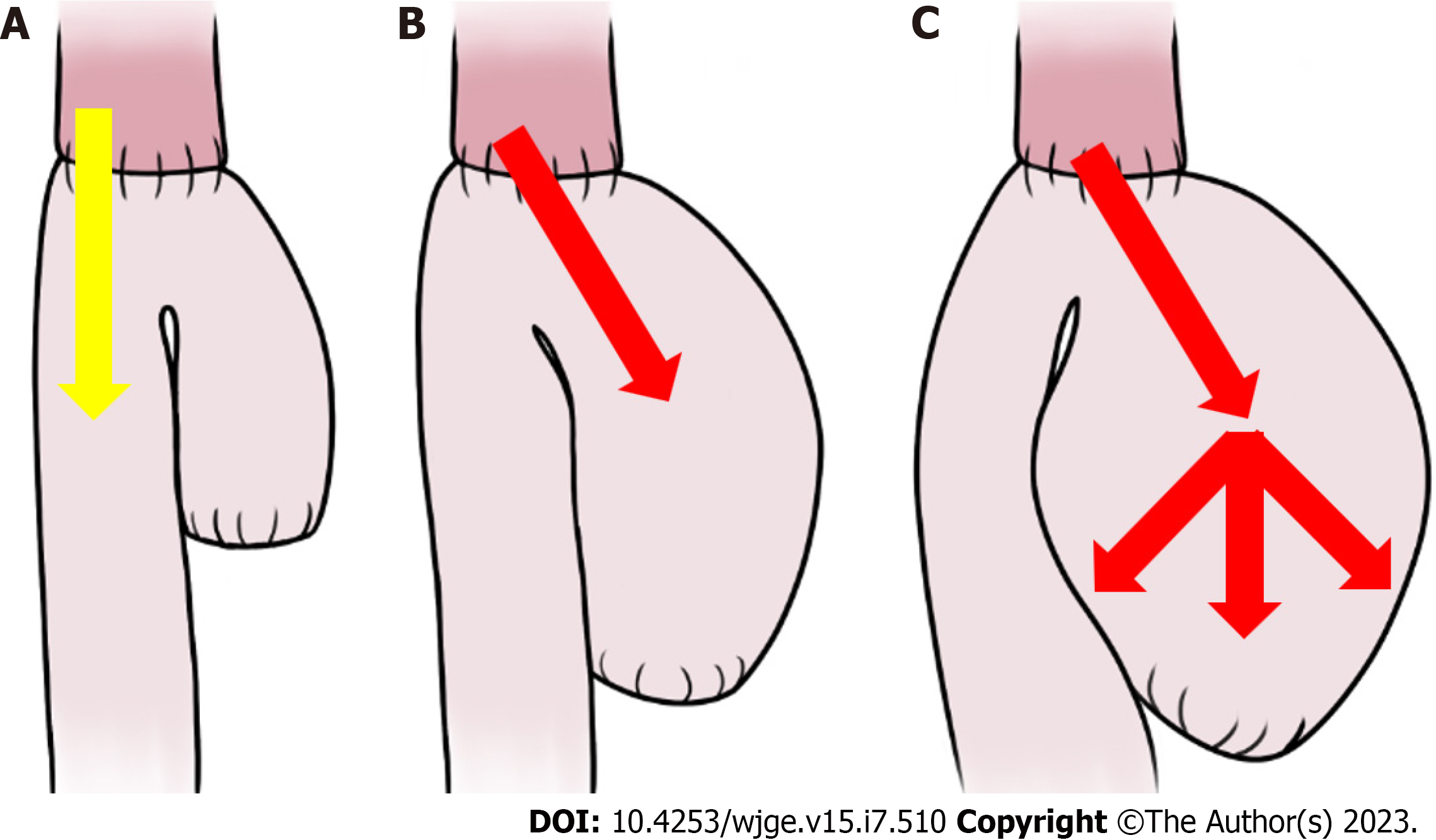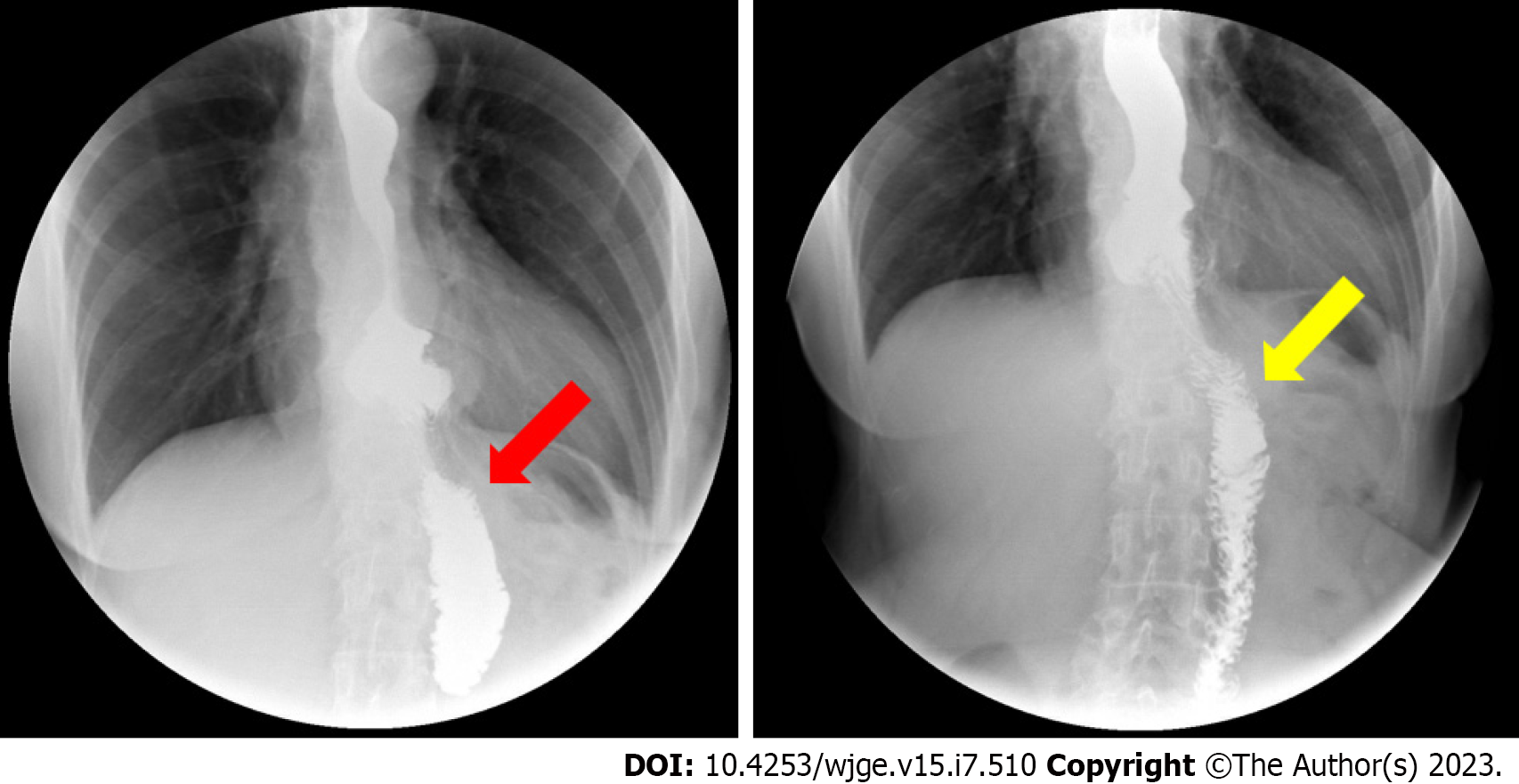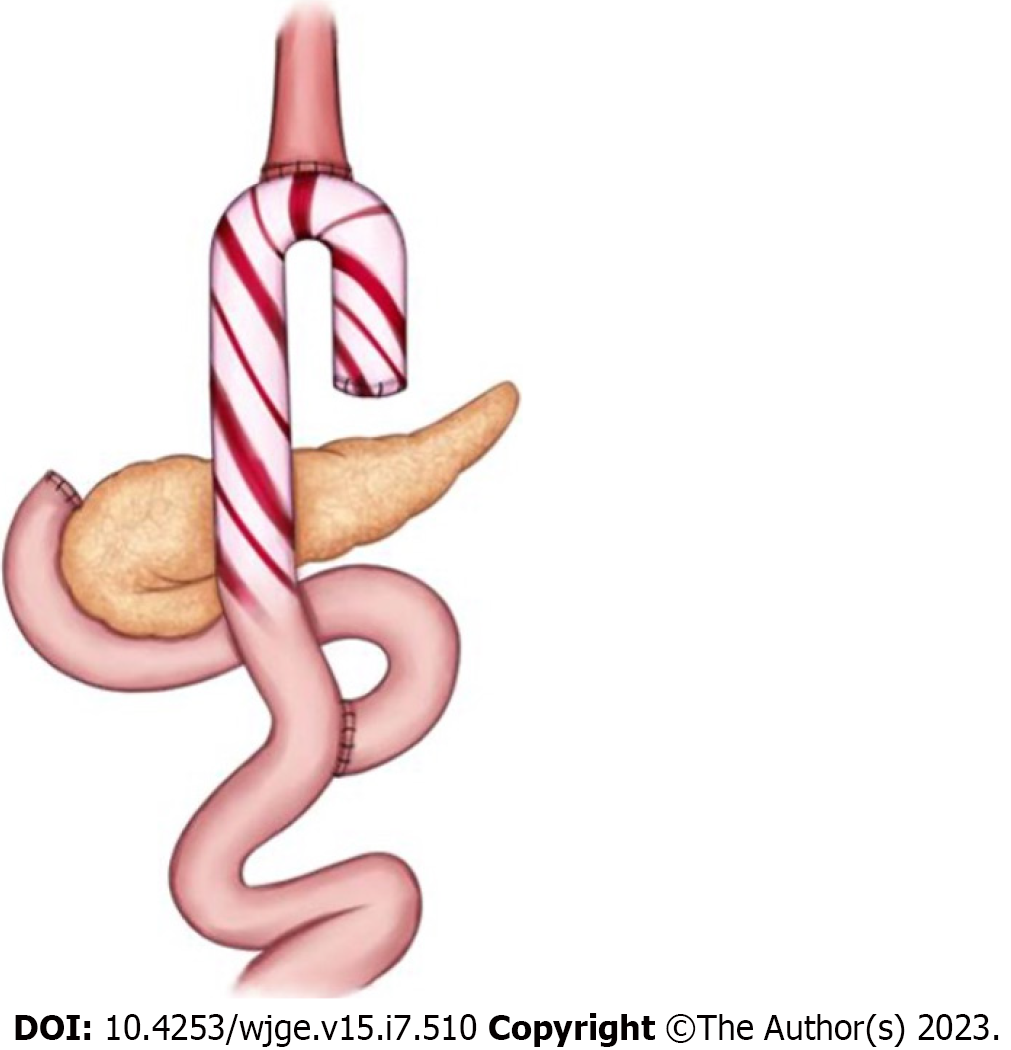Copyright
©The Author(s) 2023.
World J Gastrointest Endosc. Jul 16, 2023; 15(7): 510-517
Published online Jul 16, 2023. doi: 10.4253/wjge.v15.i7.510
Published online Jul 16, 2023. doi: 10.4253/wjge.v15.i7.510
Figure 1 An esophago-jejunal anastomosis.
A: The optimal morphology of an esophago-jejunal anastomosis, where the blind loop is short, and the efferent loop is properly aligned (yellow arrow); B: A long blind loop preferentially aligned with the axis of the esophagus (red arrow) favoring the passage of food towards it; C: A blind loop filled with food compresses the efferent loop and progressively dilates (red arrows), which over time worsens patient's food intolerance.
Figure 2 An upper gastrointestinal series in a patient with candy cane syndrome demonstrates.
Left, the preferential filling of the blind limb (red arrow). Right, a delayed “spill” of contrast to the efferent limb (yellow arrow).
Figure 3
A keep-in-mind image: This condition was first called candy cane syndrome in 2007 in reference to the so-called cane-shaped candy.
- Citation: Rio-Tinto R, Canena J, Devière J. Candy cane syndrome: A systematic review. World J Gastrointest Endosc 2023; 15(7): 510-517
- URL: https://www.wjgnet.com/1948-5190/full/v15/i7/510.htm
- DOI: https://dx.doi.org/10.4253/wjge.v15.i7.510











